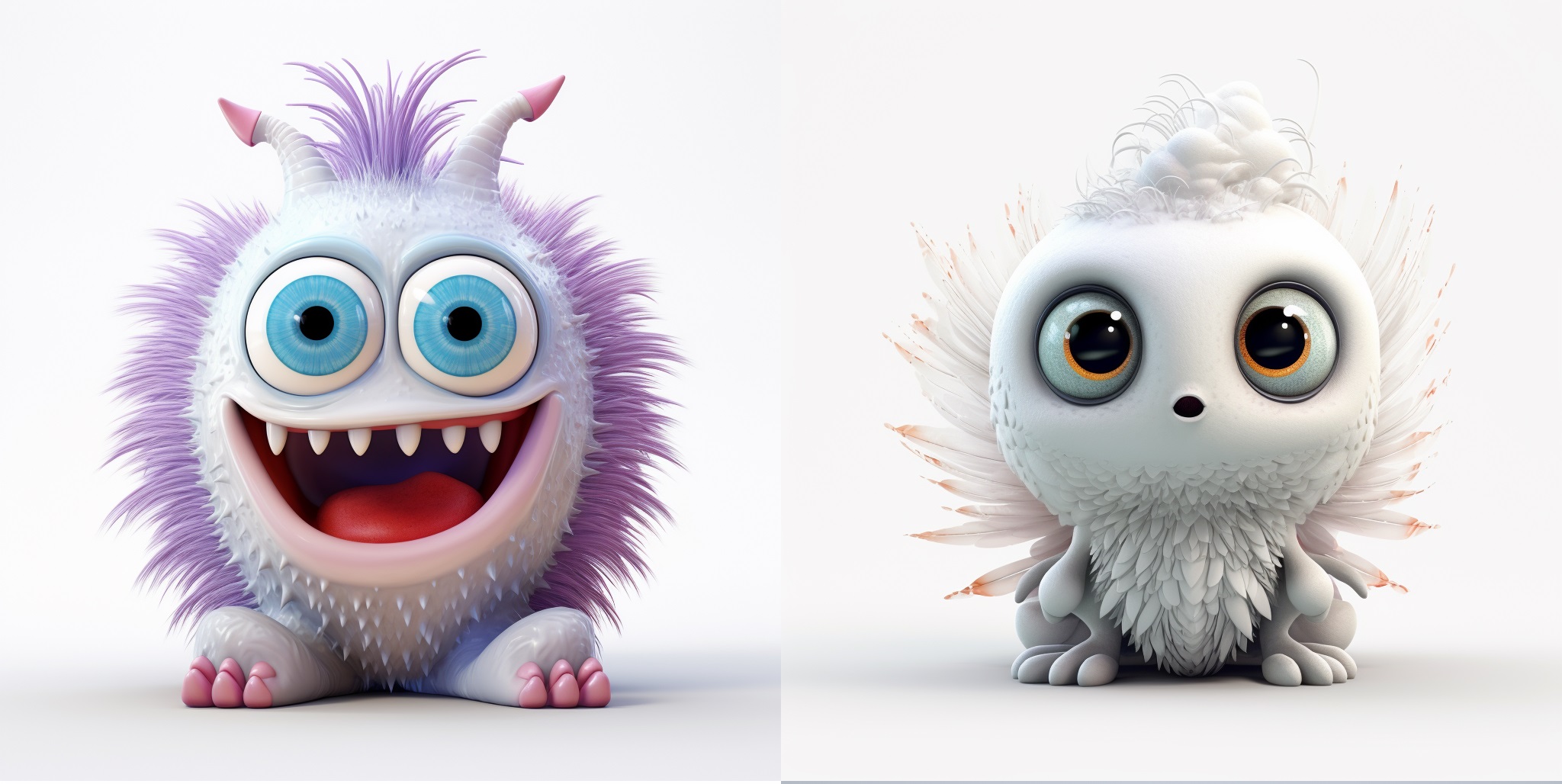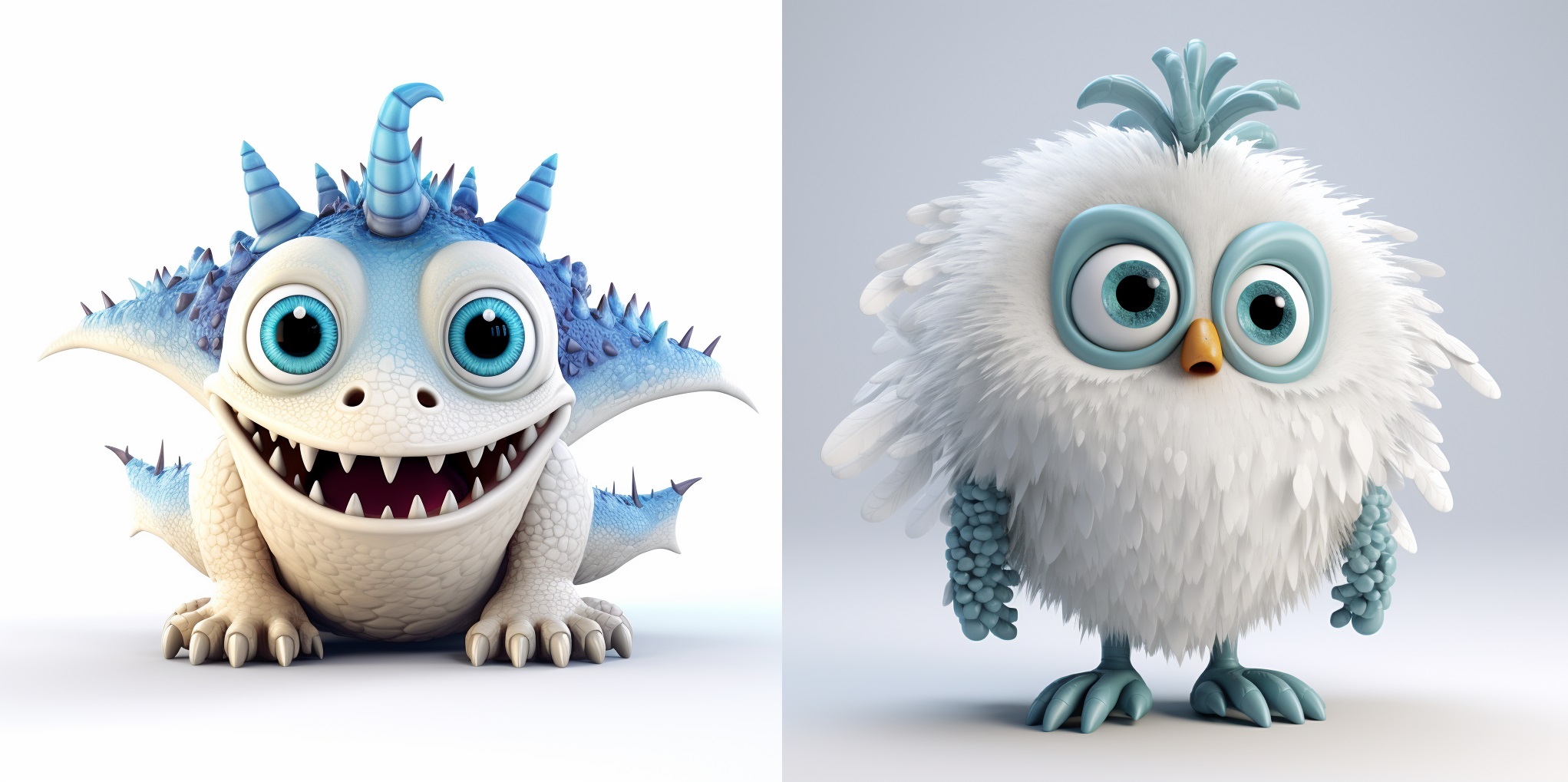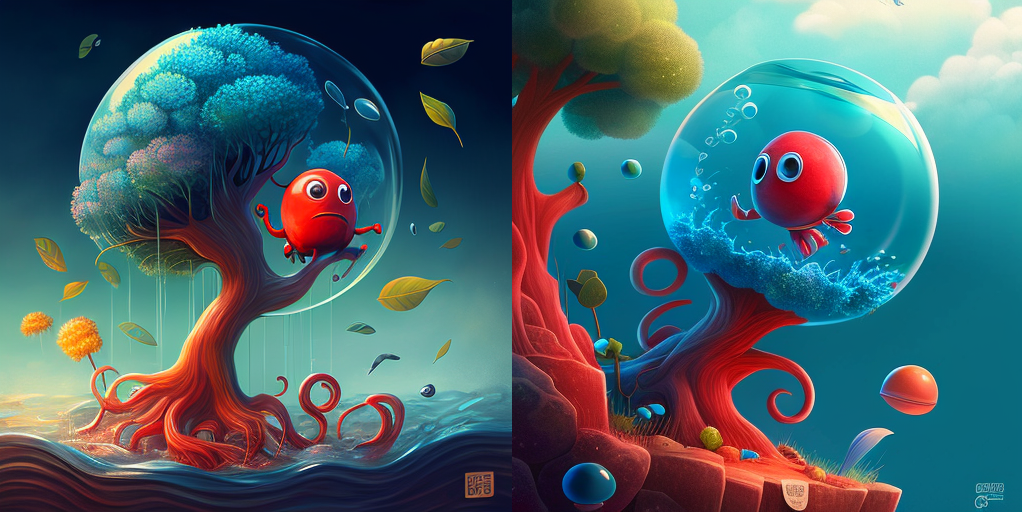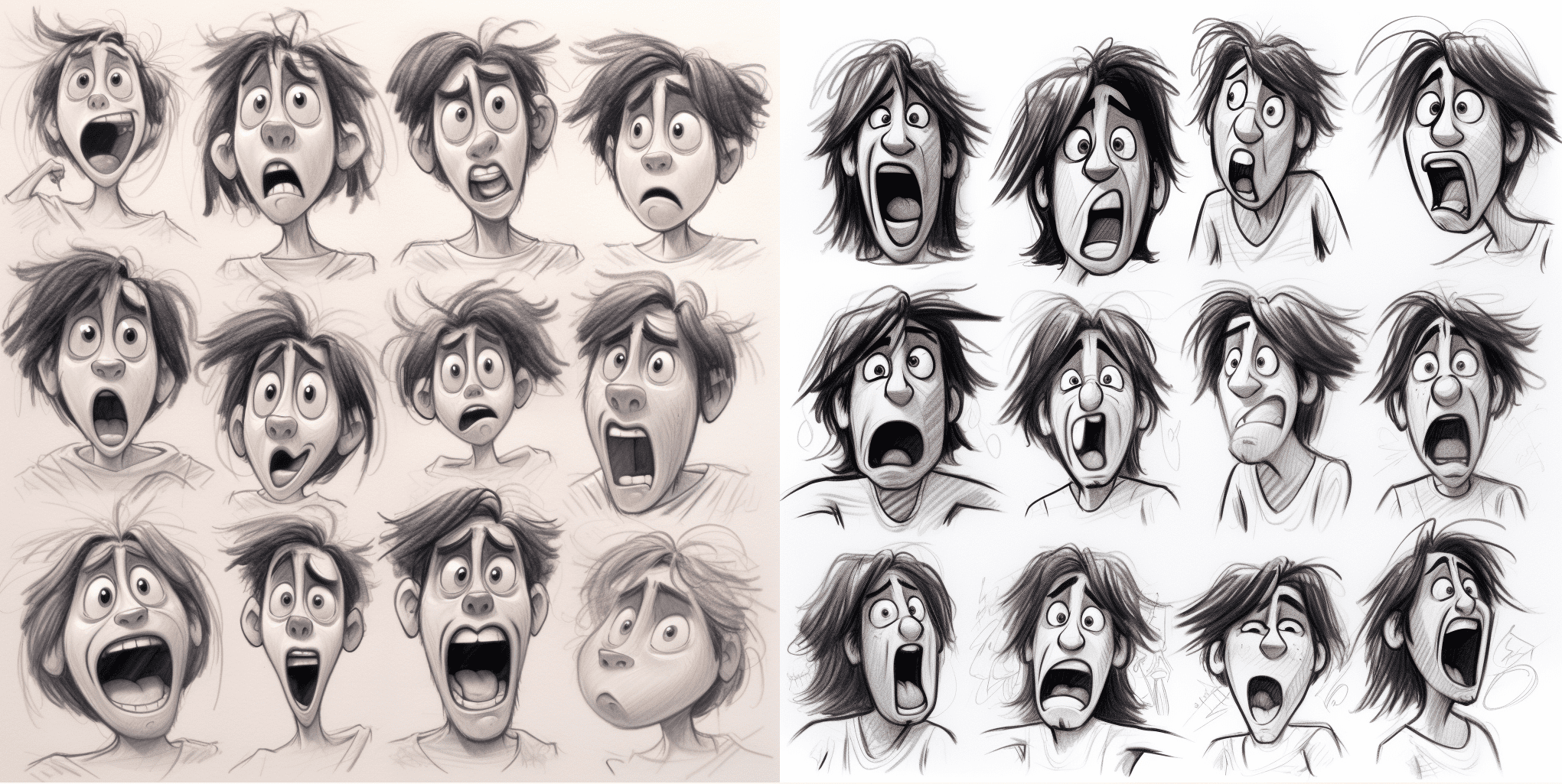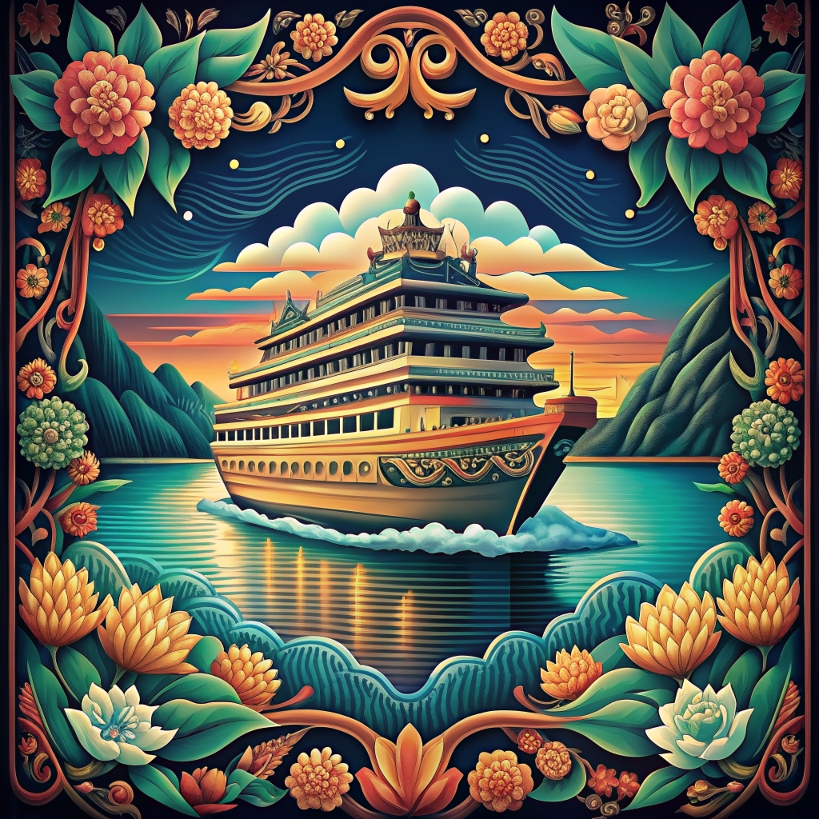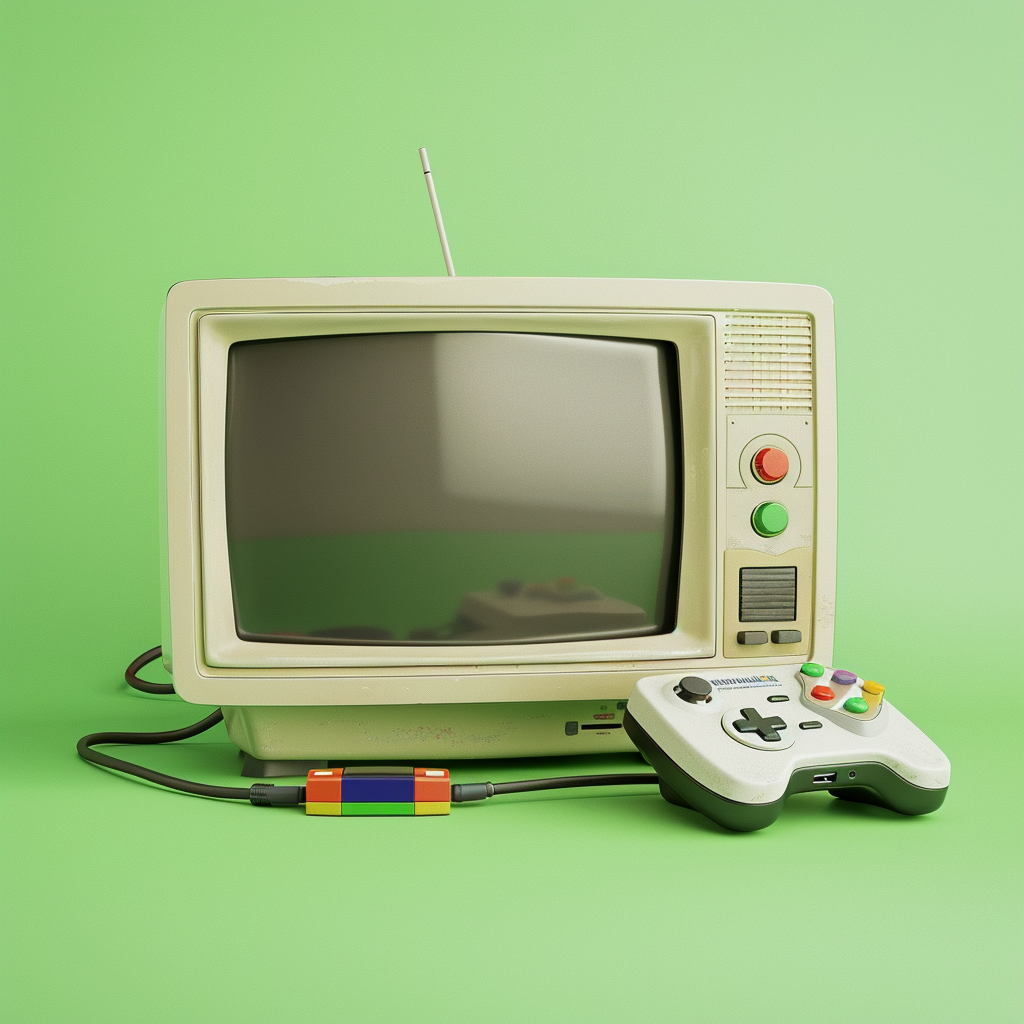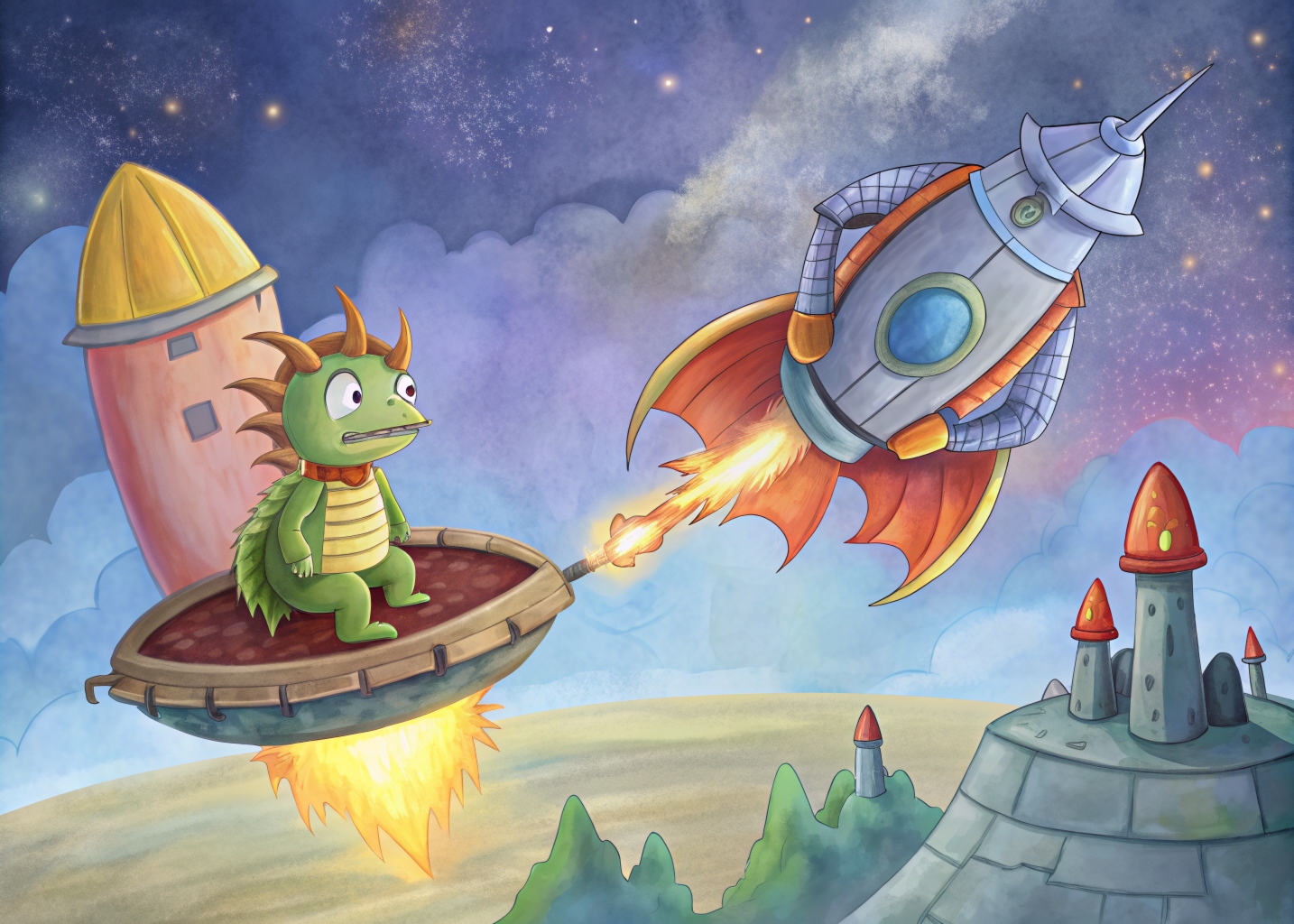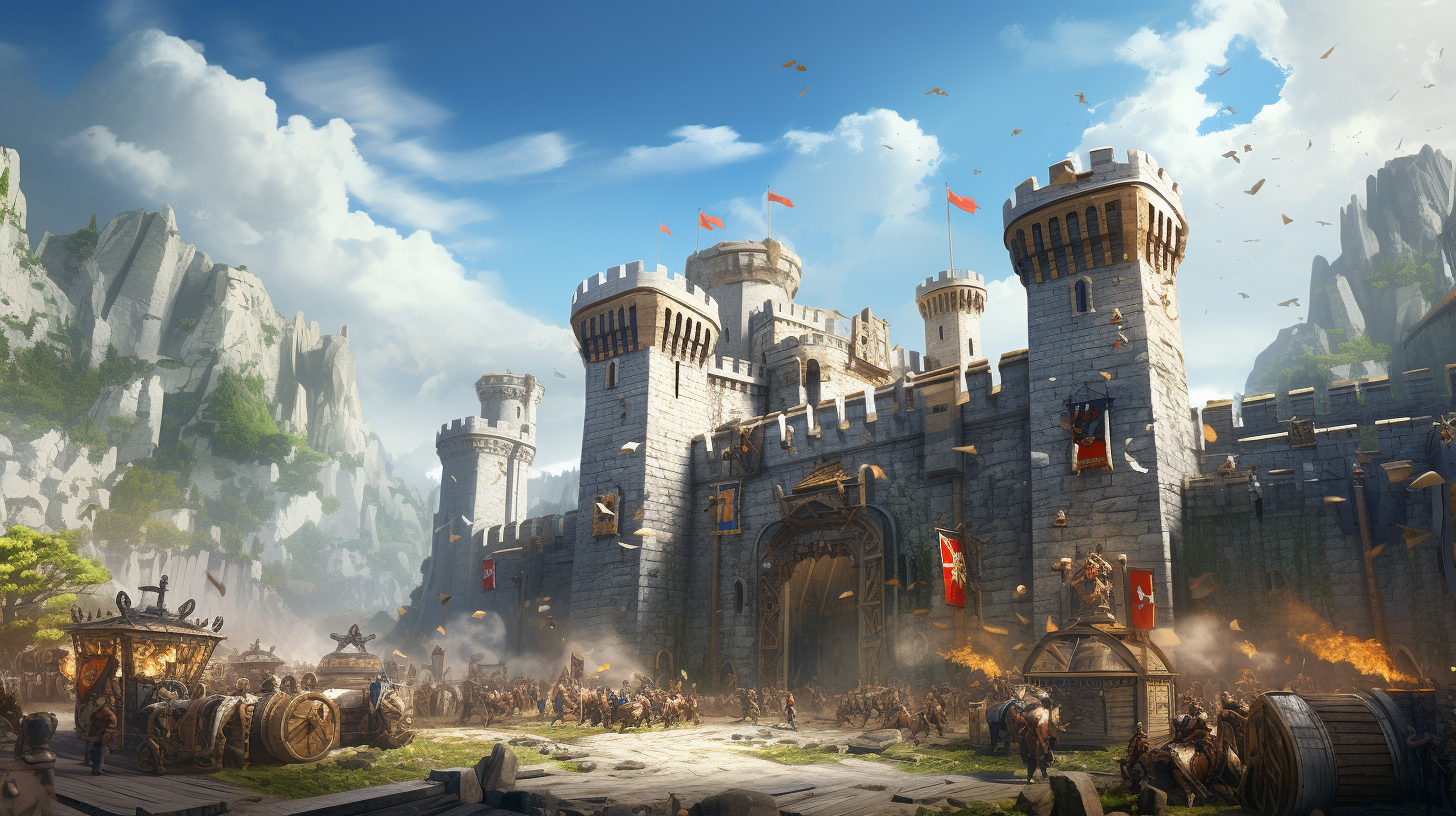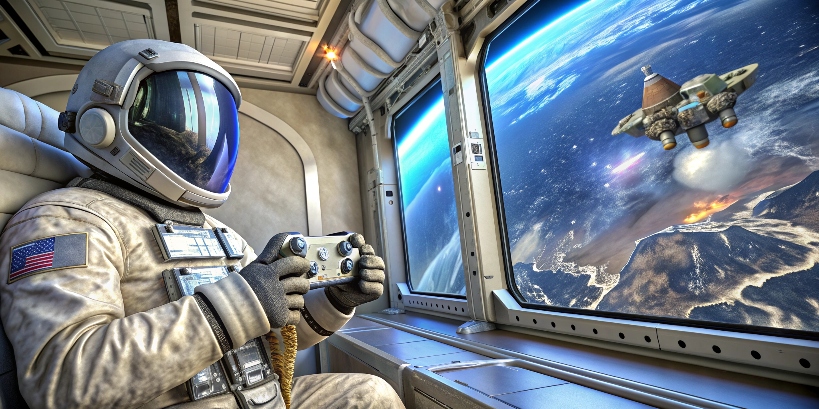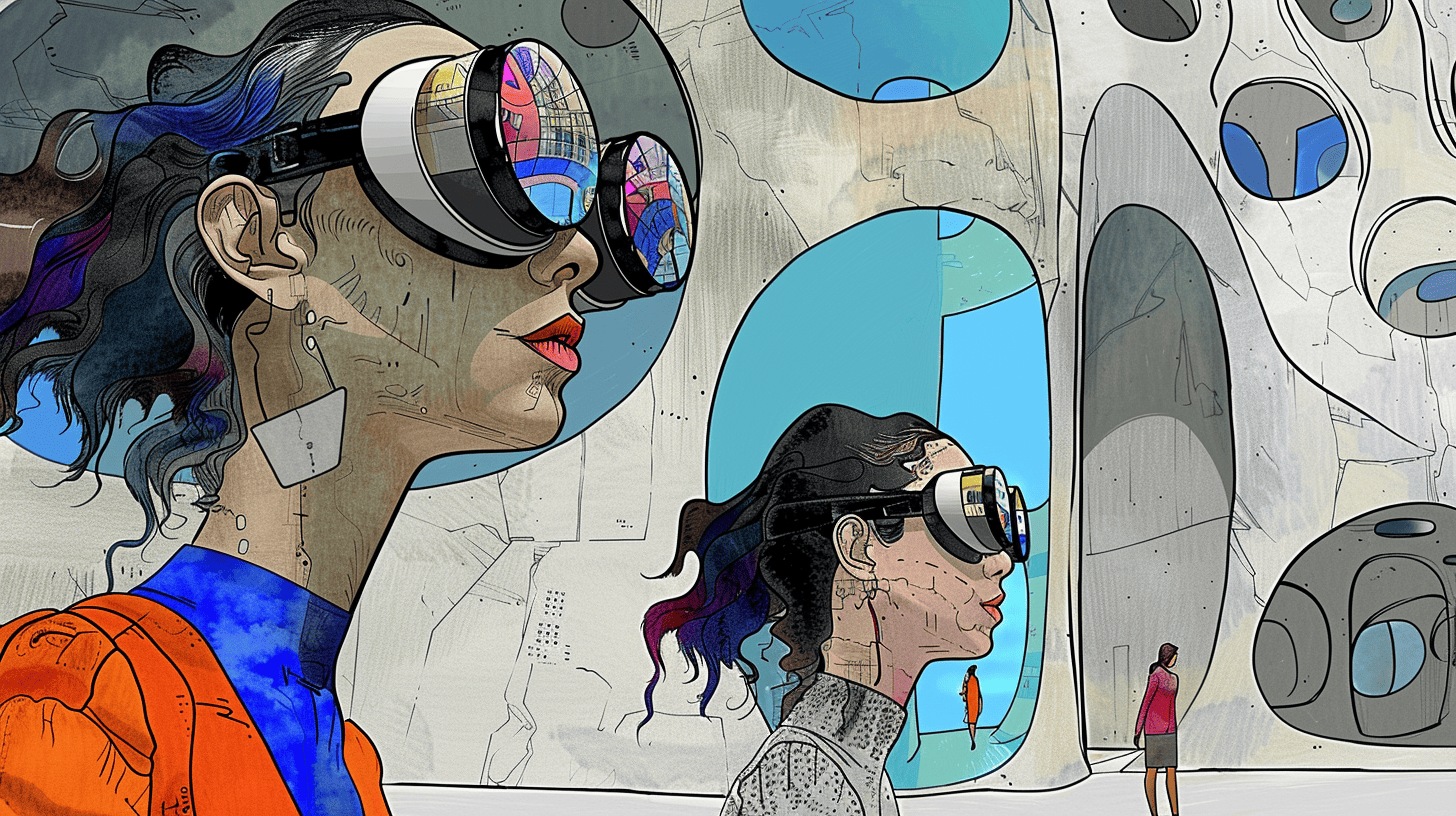It is difficult to overstate the significance of 3D character modeling in video games. Any game must have a setting that is flawlessly created and a well-thought-out game design. The way the characters appear and behave, though, has a big impact on how players will react to the game. In some genres, the protagonist even establishes the overall plot’s direction and determines how quickly the game moves.
A specialized area of game graphics that calls for knowledge in many different fields is the 3D character design. We’d like to share our suggestions in this article on making memorable game characters that players will keep in mind long after the game is over.
Concept Art: The First Step
Concept art plays a pivotal role in the captivating world of 3D modeling characters. It serves as the crucial first step in the creative process, guiding artists and designers to bring characters to life.
Concept art is the visual manifestation of initial ideas and sketches. It acts as a bridge between imagination and reality. It is the first step when artists flesh out the characters’ appearances, personalities, and narratives. Through this medium, 3D character creators explore various visual elements like costume design, facial expressions, and distinctive features.
One remarkable aspect of concept art is its power to influence the entire 3D character modelling process. Renowned concept artists, like Ralph McQuarrie’s iconic work on Star Wars, have left an indelible mark on the industry. McQuarrie’s concept art for Darth Vader, R2-D2, and other characters profoundly shaped their final appearances, demonstrating the lasting impact of concept art on character design.
In addition to McQuarrie, artists like Syd Mead, responsible for the futuristic world of Blade Runner, and H.R. Giger, the mastermind behind the terrifying Alien creature, have also left their artistic fingerprints on a 3D character model. Their concept art not only inspired the characters’ aesthetics but also imbued them with a unique atmosphere and storytelling depth.
Concept art, which gives original ideas life and directs the creative process, is essentially the foundation of 3D character design. It creates the framework for the development of characters, ensuring that they connect with viewers and grow into enduring icons in the entertainment industry.
Defining the Character’s Personality and Story
Defining a character’s personality and backstory is a pivotal aspect of character modeling for games, as it forms the foundation upon which their visual representation is built. These elements not only make characters relatable but also drive the narrative, enhancing the overall storytelling experience.
The significance of character personality lies in its ability to create depth and authenticity. A well-defined personality informs the character’s choices, actions, and reactions throughout the story. Whether a 3D figure model is brave and adventurous, shy and introverted, or witty and mischievous, their personality guides their interactions and adds layers to their development.
Moreover, a character’s backstory provides context and motivation. It explains why they are the way they are and helps the audience connect with their experiences and struggles. Whether it’s a tragic past that fuels a hero’s determination or a mysterious history that shrouds an antagonist, the backstory drives game character modeling and plot progression.
Character traits and narratives significantly influence design. For instance, a heroic character 3D model might have a strong, upright posture and wear vibrant, heroic colors, while a villain could have angular features, dark attire, and a menacing demeanor. Take Batman as an example; his dark, brooding personality and traumatic past are directly reflected in his sleek, intimidating costume design and shadowy aesthetic.
Character personality and backstory are the cornerstones of effective character design. They breathe life into characters, guiding their visual representation and ensuring they resonate with audiences on a personal and emotional level. These elements are the storytelling glue that binds characters to their narratives, making them memorable and impactful.
Initial Sketching and Ideation
Turning concepts into initial sketches is a vital stage in 3D character rendering, as it’s where ideas begin to take visual form. This process involves creativity, experimentation, and careful consideration to bring characters to life.
- Understand the Brief: Start by thoroughly understanding the character’s purpose, role, and backstory. A clear understanding of the character’s context will guide your sketching process.
- Research and Inspiration: Gather reference materials and seek inspiration from various sources such as art, nature, fashion, and cultural elements. This research can help you generate fresh ideas and avoid clichés.
- Thumbnail Sketches: Begin with small, quick thumbnail sketches to explore different design directions. These rough sketches are a low-pressure way to experiment with shapes, silhouettes, and proportions.
- Focus on Silhouettes: Pay attention to the character’s silhouette. A strong silhouette helps a character stand out and be recognizable, even from a distance.
- Iteration: Understand that the initial sketches are just the beginning. Be open to revisions and don’t settle for the first idea that comes to mind. Iteration is key to refining and improving your design.
- Embrace Diversity: Characters in any story world should have unique features. Experiment with diverse body types, ages, and cultural influences to create a rich and varied cast.
- Incorporate Story Elements: Infuse your sketches with elements that reflect the character’s personality, history, and role in the story. These details can make the character more relatable and engaging.
- Experiment with Accessories and Props: Think about how accessories, clothing, and props can enhance the character’s design. These elements can convey a character’s occupation, hobbies, or backstory.
- Feedback and Collaboration: Share your sketches with peers or collaborators to gain fresh perspectives and ideas. Constructive feedback can lead to improvements and new design angles.
- Stay True to the Character: While it’s important to be creative, ensure that the character’s design remains true to their established personality and story. Consistency is key for character integrity.
- Digital Tools: Utilize digital tools if you’re working digitally. Software like Photoshop, Illustrator, or 3D modeling software can aid in refining your initial sketches.
- Document Your Process: Keep a record of your sketches and ideation process. It can be insightful to look back on your creative journey and see how your character evolved.
In summary, initial sketching and ideation are dynamic processes that require a balance of creativity, research, and adaptability. By following these tips, artists can develop compelling and unique character modeling that capture the essence of the story and engage the audience.
Digital Tools and Technology
Digital tools and technology have ushered in a new era of creativity and productivity in the field of character creation. These technological developments give artists strong tools for conceptualizing, honing, and putting their ideas into action, greatly influencing the design process.
Commonly Used Digital Tools and Software
- Graphic Tablets: Graphic tablets, like Wacom’s Intuos and Cintiq series, allow artists to draw directly onto a screen, providing a more intuitive and precise drawing experience.
- Digital Painting Software: Software like Adobe Photoshop and Corel Painter offer an array of brushes and tools for creating detailed and expressive 3D person model designs.
- 3D Modeling Software: Applications such as Blender, Maya, and ZBrush enable artists to craft 3D character models with intricate details and realistic textures.
- Vector Graphics Software: Programs like Adobe Illustrator are excellent for creating clean, scalable character designs, often used in animation and branding.
- Tablet and Mobile Apps: Apps like Procreate and Adobe Fresco have made digital character design accessible on tablets and smartphones, making it easier for artists to work on the go.
Revolutionizing the Design Process
Technology has revolutionized character design in several ways:
- Efficiency: Digital tools allow for quick experimentation and easy revisions. Artists can duplicate, edit, and adjust elements with minimal effort, saving time and resources.
- Collaboration: Digital files are easily shareable, enabling seamless collaboration among artists, writers, and designers, regardless of geographical distances.
- Flexibility: Digital designs can be resized, recolored, and repurposed without loss of quality, making them adaptable to various media and formats.
- Realism: 3D modeling software and advanced rendering techniques enable artists to create highly detailed, lifelike characters with complex textures and lighting.
| Aspect | Traditional Methods | Digital Methods |
| Common Tools and Software | Pencils, brushes, physical media | Graphic tablets, digital painting software, 3D modeling software, vector graphics software, tablet/mobile apps |
| Revolutionizing the Design Process | – Tactile experience | – Efficiency and quick revisions |
| – Limited undo capabilities | – Seamless collaboration | |
| – Physical originals | – Adaptability to various media formats | |
| – Realism with 3D modeling and rendering | ||
| Pros | – Immersive, tactile experience | – Versatility with a wide range of creative tools |
| – Physical artwork for sale or display | – Easy undo and revisions | |
| – Environmentally friendly | ||
| Cons | – Correction of mistakes can be challenging | – May lack the tactile immersion of traditional tools |
| – Digital files lack physical artifacts |
Refining the Design: From 2D to 3D
The transition from 2D concept art to 3D modeling is a pivotal phase in character design that involves a shift from flat, two-dimensional representations to three-dimensional, tangible figures. This process bridges the gap between artistic imagination and digital reality, presenting unique challenges and considerations.
Challenges and Considerations in 2D to 3D Transition:
| Challenge/Consideration | Description |
| Perspective and Proportions | Ensuring that the character’s proportions and scale match the 2D concept while accommodating 3D perspectives. |
| Depth and Volume | Capturing the depth and volume of the character’s features, like clothing folds, hair, and facial expressions. |
| Texture and Materials | Choosing and applying textures and materials to achieve a realistic appearance for the character’s surfaces. |
| Rigging and Articulation | Designing a functional rigging system that allows the character to move realistically while retaining its design integrity. |
| Lighting and Rendering | Considering how lighting and rendering techniques impact the character’s visual appeal and realism. |
| Technical Constraints | Adapting to technical limitations of the 3D software and hardware, optimizing performance without compromising design. |
Examples of Character Design Evolution through 3D Modeling:
| Character | 2D Concept Art | 3D Model |
| Lara Croft | Initial concept art featured a stylized, athletic adventurer with exaggerated proportions. | 3D modeling transformed Lara Croft into a realistic, highly detailed character for the Tomb Raider games. |
| Sonic the Hedgehog | Sonic’s original 2D design was iconic for its simplicity. | Transitioning to 3D retained his core design elements while adding depth and texture for modern gaming. |
| Iron Man | 2D comic illustrations depicted Iron Man’s iconic armor designs. | In 3D modeling for films, intricate details and dynamic articulation brought the suits to life. |
| Pikachu | The 2D version showcased Pikachu’s charming simplicity. | In 3D, Pikachu retained its cuteness while becoming more dynamic and expressive in Pokémon games and movies. |
The transformation from 2D concept art to 3D modeling requires careful attention to detail and a deep understanding of both artistic design and technical implementation.
Texturing, Lighting, and Rendering
How to make a 3D character? Texturing, lighting, and rendering are critical stages in the 3D character design process, as they breathe life into a model, making it appear realistic and engaging.
Enhancing the 3D Character Model:
- Texturing adds depth and realism by applying detailed textures to the character’s surfaces. This includes skin, clothing, and props, providing a tactile quality.
- Lighting is essential for setting the mood and highlighting features. Properly placed light sources create shadows, highlights, and ambiance.
- Rendering transforms the 3D model into a 2D image or animation, incorporating all the visual elements to produce a final, polished result.
Attention to Detail:
- Attention to detail is paramount. It involves meticulously crafting textures to showcase intricate features like pores, wrinkles, or fabric patterns.
- Lighting nuances can emphasize emotions, convey time of day, and create atmosphere. Careful placement of lights ensures a balanced and visually appealing result.
Industry Trends and Techniques:
- PBR (Physically Based Rendering) is a popular technique for achieving photorealistic textures by simulating how materials interact with light.
- High Dynamic Range Imaging (HDRI) is used for realistic lighting, allowing artists to capture real-world lighting scenarios.
- Real-time rendering engines like Unreal Engine and Unity have revolutionized character design in gaming, enabling highly immersive experiences.
Texturing, lighting, and rendering breathe life into 3D character models. Attention to detail and utilization of industry trends and techniques are crucial to creating characters that captivate audiences with their realism and emotional depth.
Rigging and Animation
How to 3D model a character? Rigging and animation are indispensable components if you want to create 3D anime character. Rigging involves creating a digital skeleton that enables a character to move realistically, while animation breathes life into the character, making them dynamic and expressive.
A well-rigged character provides a foundation for fluid and believable animations. It allows characters to emote, walk, run, and perform intricate actions, enriching their storytelling potential.
Iconic character animations, such as Mickey Mouse’s playful gestures or Gollum’s nuanced expressions in “Lord of the Rings,” demonstrate the profound impact of animation on character development. These animations have solidified characters in our hearts and minds, showcasing the transformative power of rigging and animation in character design.
Quality Assurance and Testing
Testing character models in various contexts is essential to guarantee their versatility and suitability for different media and scenarios. Characters may appear in diverse lighting conditions, resolutions, or interactive environments, and rigorous testing helps maintain their consistency and impact.
Character design history is replete with mishaps that highlight the significance of quality assurance. Famously, Sonic the Hedgehog’s initial 3D design faced widespread criticism, prompting a complete redesign to align with fans’ expectations. These stories underscore the importance of thorough testing to avoid design missteps, ensuring that characters resonate with audiences and fulfill their intended roles effectively.
Conclusion: Bringing Characters to Life
From concept to 3D model, artists take part in the character design process on a creative journey that combines their vision and technological expertise. Concept artists, modelers, riggers, and animators all contribute their specialties to this collaborative process in order to create characters that fascinate viewers.
The foundation of storytelling is character design, which brings the protagonists, antagonists, and supporting characters to life. These characters are crucial to effective storytelling because they allow people to engage emotionally with the narrative. In the end, the character design pipeline provides proof of the value of imagination and collaboration in enhancing stories and captivating viewers in enduring ways.


